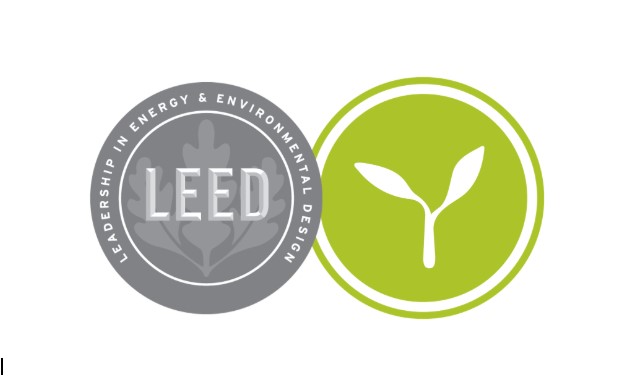In today’s real estate market, sustainability is no longer just a buzzword—it’s an essential factor influencing property value and tenant attraction. Property owners and developers are increasingly turning to certifications like LEED certification and green building certification to enhance the appeal of their buildings. These certifications represent a commitment to environmentally friendly practices, which resonate well with modern consumers and businesses.
What is LEED Certification?
LEED certification stands for Leadership in Energy and Environmental Design, a globally recognized green building certification system. It provides a framework for identifying and implementing practical and measurable green building design, construction, operations, and maintenance solutions. The certification is awarded by the U.S. Green Building Council (USGBC) and can be applied to various types of buildings, including residential, commercial, and institutional properties.
The leed certification is based on a point system, where a building earns points for meeting specific sustainability criteria in areas such as energy efficiency, water usage, indoor environmental quality, and material selection. There are several levels of certification, ranging from Certified to Platinum, with higher levels indicating greater environmental impact reduction.
How LEED Certification Enhances Property Value
Investing in leed certification can lead to several long-term benefits that significantly enhance property value. Here are some ways that achieving this certification can make a property more valuable:
Increased Market Demand
As the demand for sustainable and eco-friendly properties grows, buildings with leed certification become more desirable to both buyers and tenants. Sustainability is no longer just a preference; it’s a requirement for many organizations seeking to improve their environmental footprint. A green building certification gives a property a competitive edge in the market, attracting potential buyers or tenants who are committed to sustainability. With more businesses and individuals prioritizing green initiatives, buildings with this certification are likely to experience higher demand, which can ultimately drive up property value.
Enhanced Brand Image and Reputation
In today’s environmentally conscious world, a company’s brand is often judged by its commitment to sustainability. For commercial properties, especially, having a leed certification demonstrates that the building meets high standards of environmental responsibility. This can significantly enhance the image of both the building owner and any tenant businesses occupying the space. A building that is recognized for its sustainable features will likely attract tenants who want to align their brand with green initiatives.
For instance, tenants that operate in industries like technology, education, and healthcare—fields that prioritize sustainability—are more likely to choose a green building certification property to align with their own corporate values. Furthermore, tenants often benefit from being associated with a building that has a strong environmental reputation, as it reflects positively on their brand.
Higher Rental Rates and Occupancy
Buildings with leed certification typically command higher rental rates than those without. Studies have shown that tenants are willing to pay more for spaces that offer environmental benefits, such as energy efficiency and better indoor air quality. This is particularly true for commercial properties where sustainability can directly impact a company’s operational costs. Lower utility bills and improved environmental conditions lead to cost savings for tenants, making the higher rent justified.
Moreover, green building certification buildings tend to have higher occupancy rates. This is due to the growing number of organizations that prioritize sustainability when choosing office space. A building that is LEED-certified not only attracts tenants seeking to lower their own carbon footprint but also appeals to companies needing to meet their own sustainability goals.
Reduced Operating Costs
One of the most appealing aspects of LEED-certified buildings is the potential for lower operating costs. Energy-efficient systems, water conservation practices, and sustainable building materials often result in reduced utility costs. These operational cost savings can be passed on to tenants in the form of lower rent or shared cost reductions, making the property more attractive.
For property owners, the initial investment in sustainable features may be offset by the long-term savings on energy consumption and maintenance. Furthermore, buildings with leed certification are typically built with durable, high-quality materials that require less maintenance over time, reducing long-term costs. The lower operating expenses make these buildings more appealing to investors and can enhance the property’s overall market value.
Attracting Tenants with LEED Certification
A leed certification not only increases the property’s value but also attracts tenants who are committed to sustainability. Let’s take a closer look at how this certification can be a key factor in tenant selection.
Sustainable Business Practices
As businesses become more conscious of their environmental impact, many are seeking office spaces that reflect their sustainability goals. LEED-certified buildings offer tenants a unique opportunity to enhance their green initiatives by operating in an environmentally friendly space. From energy-efficient lighting to improved air quality, these buildings create a healthier and more productive environment for employees.
Tenants are increasingly prioritizing green building certification when selecting office spaces, as it helps them meet their own corporate sustainability objectives. Furthermore, operating in a leed-certified building can improve a company’s reputation with clients, customers, and stakeholders, reinforcing its commitment to environmental stewardship.
Healthier Indoor Environments
Indoor environmental quality is a key factor in the leed certification process. Properties that meet LEED standards typically offer superior air quality, natural lighting, and temperature regulation, which contribute to the overall health and comfort of occupants. Tenants, especially those in office spaces, are increasingly looking for buildings that provide a healthy indoor environment to boost employee productivity and well-being.
Studies have shown that employees working in green-certified buildings report fewer health problems, such as headaches and respiratory issues. A green building certification assures tenants that the building’s design prioritizes their health and well-being, making it a more attractive choice for organizations looking to support their workforce’s physical and mental health.
Long-Term Sustainability
In addition to the immediate benefits, tenants are also attracted to the long-term sustainability of a leed-certified building. These buildings are built to stand the test of time, both in terms of durability and environmental impact. By choosing a LEED-certified building, tenants are investing in a property that is more likely to stay ahead of future sustainability trends, ensuring that their office space remains competitive and relevant as environmental standards evolve.
For commercial tenants, sustainability goes beyond just the physical space. Tenants also benefit from the building’s ongoing commitment to reducing its carbon footprint, ensuring that they are part of a long-term solution to global environmental challenges. This forward-thinking approach can significantly impact a tenant’s decision-making process when selecting office space.
Conclusion
The role of leed certification in enhancing property value and attracting tenants is undeniable. With its focus on sustainability, energy efficiency, and overall environmental responsibility, green building certification plays a crucial role in today’s real estate market. Property owners and developers who invest in leed certification are not only helping the environment but also positioning themselves for long-term success by attracting higher-value tenants, reducing operating costs, and enhancing the overall appeal of their properties.
As sustainability becomes an increasingly important factor for both tenants and property investors, buildings with leed certification will continue to command higher rents, higher occupancy rates, and higher resale values. Investing in LEED certification is no longer just a luxury—it’s a necessity for property owners and developers looking to stay competitive in an ever-changing market.


